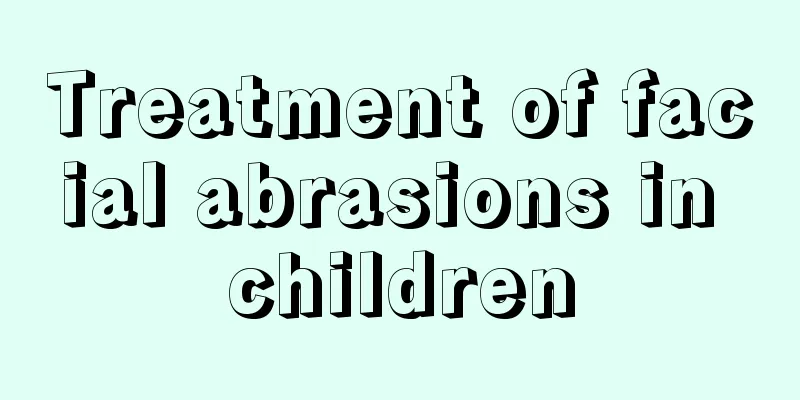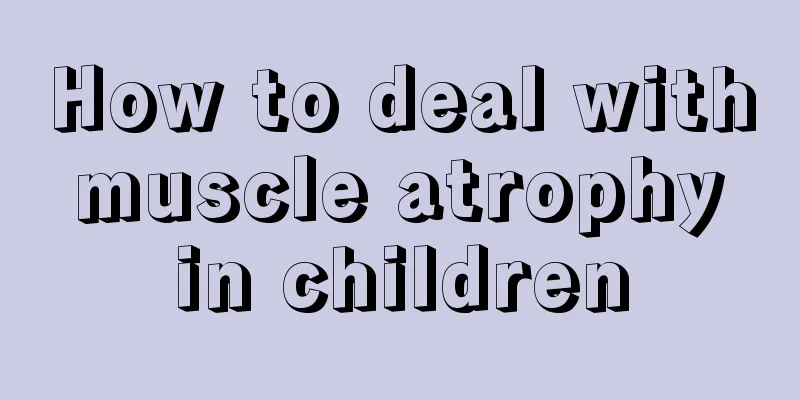How to give first aid when a child is stuck

|
Children's esophagus is very thin, so when children eat, they must chew slowly and carefully. Never make them laugh while they are eating, otherwise they are likely to get choked by food. Children will definitely suffocate after getting choked by food. At this time, parents must know the first aid measures. So how to perform first aid when a child is choked? The most common source of suffocation in daily life is foreign objects in the airway. Airway foreign body accidents often occur in babies under 3 years old. Babies like to put shelled pine nuts, melon seeds, peanuts, and sugar balls into their mouths, which can easily be accidentally inhaled into the airway when they cry, laugh, or inhale. There have been many reports recently of suffocation caused by accidental inhalation of jelly, which deserves extra vigilance. First aid measures: When a baby is suffocated by a foreign object in the airway, breathing is completely impossible and there is almost no chance of emergency treatment in the hospital. At this time, parents and people around them are most needed to provide effective rescue on the spot. Specific rescue methods: 1. Encourage coughing Foreign objects that cause choking are mostly stuck in the throat, especially foreign objects like thin films and jelly. Usually only part of them are sucked into the laryngeal cavity, and part of them is outside the glottis. At this time, encourage the baby to cough loudly, which can sometimes cough out the foreign object. 2. Shoot the back while leaning forward If it is suspected that a foreign object has been inhaled into the baby's airway, the baby's upper body should be tilted forward 60 degrees, with the baby lying prone on the rescuer's elbow, with the head hanging down. The rescuer should pat the baby's back vigorously with his hands, using gravity to help expel the foreign object. 3. Abdominal compression Sometimes after coughing, the gas is coughed out but cannot be inhaled, the gas in the lungs gradually decreases, and the coughed-out airflow is very small. At this time, you need to use the impact force of abdominal compression and the rising diaphragm to increase the coughed-out airflow and expel the foreign body. The method is to let the baby stand and lean forward, and the rescuer will then overlap his hands and place them on the baby's upper abdomen, squeezing it with impact to increase the abdominal pressure, lift the diaphragm, increase the chest cavity pressure, and promote strong airflow in the lungs to flush the foreign body out of the trachea. 4. Cardiopulmonary resuscitation If the foreign body is removed and the obstruction is relieved, but the baby's breathing and heartbeat have stopped, artificial respiration and external cardiac compression should be performed immediately. Kind tips: 1. When removing foreign objects, do not try to remove invisible foreign objects, otherwise it will only push the foreign objects deeper. 2. Babies should not eat whole fried beans, melon seeds, peanuts, hazelnuts, pine nuts, broad beans and other foods. They should not be given to babies to play with with the shells. The skin and shell should be peeled and the fruit should be smashed before eating. 3. When eating jelly, do not swallow the whole piece into your mouth. Cut it into small pieces in a bowl and then give it to your baby. 4. Some parents adopt the method of pinching the nose to force medicine into the baby's mouth for those babies who refuse to take medicine. This is also very dangerous: pinching the nose makes the baby breathe through the mouth and it is very easy for the baby to inhale the medicine into the airway. 5. Don’t talk to your baby while he is eating, and don’t make him cry or make him laugh, so as to avoid accidental inhalation of food. |
<<: Is it ok for a baby to have a cold and sweat?
>>: What is the difference between a baby's puffiness and real obesity?
Recommend
Newborn baby crying for no reason
Newborns cannot express their thoughts or physica...
How to treat cerebral palsy in children
In our daily lives, many women are prone to cereb...
What to do if your child is bitten by an insect
Children's skin is relatively delicate, and t...
What to do if your child's pores are clogged
If you find that your child has clogged pores, yo...
If your child is nauseous and vomiting, observe the symptoms and then treat them
Sometimes children will experience symptoms of na...
What are the characteristics of urticaria in children
What are the symptoms and characteristics of urti...
What are the reasons for children to become fat?
Many babies are actually very fat when they are j...
Why do children get acute pneumonia?
Children have many illnesses. They have just come...
Symptoms of pharyngitis in 10-year-old children
Many people think that only adults suffer from ph...
What should I do if my child has a fever during the day?
It is not so rare for children to have a fever. I...
What should children eat to soothe the liver, strengthen the spleen and nourish the stomach?
Children are most likely to suffer from indigesti...
Child has stomach ache after meal
Children have stomach pain after eating. There ar...
Child coughs and spits white foamy sputum
Children's colds can easily lead to high feve...
What to do if your three-year-old baby has a bad temper
As children grow up day by day, many mothers find...
What should I do if my seven and a half month old baby is zinc deficient?
Nowadays, many newborn babies suffer from zinc de...









